Have you tried Botox? What has been your personal experience?
Absolutely. I started using it myself about 13 years ago. The natural aging process sometimes makes people look tired or grumpy. After trying Botox for the first time, I loved the way it helped relax the lines around my eyes and forehead.
Over a decade later, I’m still a huge fan, both personally and professionally. In my opinion, Botox and other neurotoxins like Dysport are go-to, no-brainer products in facial aesthetics. I’m not alone. Since 2015, Botox has been the #1 cosmetic procedure performed in the world. In its 2023 Plastic Surgery Statistics Report, the American Society of Plastic Surgeons reports that over 9 million neuromodulator procedures were performed worldwide.1
Can you tell us a little bit about how Botox was discovered?
I learned this story directly from Dr. Jean Carruthers, who is credited with “discovering” cosmetic Botox. I had the opportunity to meet her through my mentor, Dr. Theda Kontis.
Botox was first used medically in 1978 by Dr. Alan Scott, an ophthalmologist who started using it as a medication to treat conditions such as strabismus (the condition known as “crossed eyes”) and blepharospasm, a muscle spasm which causes the eyelids to close shut.
In 1987, Dr. Carruthers, also an ophthalmologist, noted that the patients she treated for the same eye conditions experienced improvement in facial wrinkling, too. One evening, she shared her observations with her husband, Dr. Alastair Carruthers, a dermatologist. She posited the idea that Botox might help address cosmetic frown lines that bothered his patients. And thus, cosmetic Botox was (quite accidentally) discovered.
How does Botox work?
Botox is produced from a bacteria called Clostridium botulinum. For medical use, it is purified and then heavily diluted. It stops a muscle from contracting by preventing the release of a chemical called acetylcholine from the end of the nerve that stimulates the muscle contraction. Blocking the release of this chemical causes temporary muscle relaxation.
Over time, the nerve that stimulates the muscle will sprout new nerve endings, restoring the muscle’s ability to contract. For this reason, the effect of Botox is temporary, and lasts about 3 to 4 months. Eventually, the Botox molecule itself is broken down in the body and excreted by the kidneys.
But is Botox safe?
When properly administered by highly qualified medical professionals such as facial plastic surgeons, Botox is very, very safe. No serious adverse events have been reported at doses recommended for cosmetic use by Allergan, the manufacturer of Botox. Serious adverse events have been reported when Botox injections were given for unapproved uses, or when Botox was mixed using unapproved methods.2 Case reports describing possible allergic reactions do exist.3
What is Botox used for?
Over the past 40 years, medical indications for Botox have expanded. It is used to treat a wide range of medical conditions including migraine and disorders caused by muscle spasms and muscle hyperactivity.
Cosmetically, Botox is used to smooth wrinkles of the face that are caused by repeated muscle movement, such as crows feet, frown lines between the eyebrows, and forehead wrinkles.
I also will use Botox to treat facial imbalances caused by asymmetric muscle movement and facial paralysis, improve upper lip fullness, lessen unwanted or exaggerated facial movement, refine the jawline, treat TMJ pain, improve the appearance of neck bands, and reduce excess sweating of the palms, underarms, and face. It’s a great tool.
What is it like to get botox?
The first thing I do with my patients is talk about what their goals are. I then perform a facial exam to see if Botox is an appropriate treatment for what they want. Once we decide to proceed, we talk in detail about what to expect and what the potential risks and benefits are. The area that will be treated with Botox is thoroughly cleansed. A small amount of Botox is injected using very tiny needles. The procedure is quick and there is no down time.
Botox starts working in about 2-5 days. The full effect of the treatment is apparent 10-14 days after treatment. If you’ve got an event coming up, we recommend injection 6 weeks before the event. This gives the Botox time to settle in, and for fine-tuning of results if needed.
Are there side effects?
The most common side effect is mild bruising, which resolves after a few days to a week and can be easily hidden with makeup. This only happens to a few people. It is more likely to happen if you’ve taken aspirin or ibuprofen, or if you had alcohol in the days prior to your treatment, because these have a blood-thinning effect. Some patients may experience headaches after injection. Other possible side effects include temporary asymmetry, which can easily be addressed. Sometimes, people don’t like the effect of Botox, or wish to modify it in some way. The good news is that Botox completely wears off in 3-4 months, with no residual side effects.
What about all those people walking around with obvious plastic surgery-type faces on Tik Tok/Instagram/Bravo?
Different patients have different aesthetic preferences. A particular look is also heavily influenced by other factors such as geography, the age of the patient, and the technique of the injector. For example, what is popular in LA or Miami is not popular on the East Coast. My aesthetic preference is a natural-looking face, as if you’ve just had a restful nap, rather than one that appears to have undergone cosmetic procedures.
Does botox hurt?
Discomfort associated with Botox injections varies widely between patients. Some patients report no pain at all, and some report pain. However, we have a lot of things that can make the injection as pain free, or nearly as pain free as possible, including topical numbing cream, facial vibration tools, and Pronox (laughing gas).
What if I try Botox and I don’t like it?
The good news is that it will wear off completely in 3-4 months and your muscles will move just as they did before getting Botox. There will be no residual side effects once it wears off.
Can you make it look natural?
In my opinion, if it’s obvious that you have had some kind of facial aesthetic treatment, something has gone terribly wrong. My goal is to give you natural results. I want you to look like you, but refreshed. If looking overdone is something you’re concerned about, we start with a low dose, place it strategically, and we go slow. We can always add more if needed.
What if I love it? How often can I do it?
If you love it, then you simply schedule appointments every 3-4 months for maintenance. Botox wears off gradually, and you’ll know when it’s time. You don’t have to come back every 3-4 months. I have some patients that only do it twice a year or for a special event.
Once I start doing Botox, do I have to keep doing it?
Absolutely not. The thing is, once you stop using it, your wrinkles will come back, and the mild lifting effect you get from injecting Botox in certain places will go away, too. The reason people keep doing it is simply because they really like the way they look with Botox.
Can you give me a brow lift, lip flip, slimmer jaw, chemical facelift with Botox?
Yes, yes, yes, and yes, if your anatomy is favorable. Just remember, every patient is different, and this is why your initial consultation helps you have realistic expectations.
Is Botox better than Dysport? Or Daxxify? Or Xeomin?
Clinically, they all have basically the same effect. Pick your favorite brand. The most popular in the US are Botox and Dysport, so that’s what we carry in our office every day.
How long have you been treating patients with Botox? Where did you learn how to do it?
I have been treating patients with Botox for well over a decade. My mentor, Dr. Theda Kontis, an associate professor of Facial Plastic Surgery at Johns Hopkins, was the first facial plastic surgeon to bring Botox to Baltimore shortly after it was FDA approved for cosmetic use over 30 years ago. She quite literally wrote one of the most popular books on injection techniques used by injectors all around the world. I studied under her for a year, and she taught me her techniques. She’s considered a world expert. I still pinch myself that I got to be her student.
Do men get Botox?
100% yes. About half my Botox clients are men.
Why do you charge per unit of Botox instead of a flat fee per treatment site?
Our Botox dosing is customized for each patient, and patients have different needs. No two patients are alike.
There is a wide variation in anatomy. For example, one patient’s brow area may have bigger, stronger muscles and thus require a higher dose of Botox to cause the muscle to relax. Another patient might have eyebrows that are starting to droop, and therefore will not tolerate Botox placed in the forehead, because this will cause the eyebrow to droop even more. Because men have larger and stronger muscles than women, they typically require higher doses.
Patients also have very different personal preferences. Some patients like to retain some motion for a more natural effect, and some come to us asking to be “frozen”. Some patients like arched brows, and some prefer a more horizontal brow position. Some patients like to have only one area of the face treated, and some prefer a full face treatment.
At ENT & Facial Plastic Surgery Specialists of Shady Grove, we charge based on the amount of Botox that you actually need and use. We don’t have a one-size-fits-all Botox approach, and that’s why we charge by the unit rather than the site of injection.
- American Society of Plastic Surgeons. 2023 Plastic Surgery Statistics Report. https://www.plasticsurgery.org/documents/news/statistics/2023/plastic-surgery-statistics-report-2023.pdf. N.D.
- Abbvie. Journal of Cosmetic Dermatology Published Data Demonstrating Patient Satisfaction with Natural-Looking Outcomes Following Treatment with Onabotulinumtoxn A (Botox Cosmetic). August 20, 2023. https://news.abbvie.com/2023-08-30-Journal-of-Cosmetic-Dermatology-Publishes-Data-Demonstrating-Patient-Satisfaction-with-Natural-Looking-Outcomes-Following-Treatment-with-OnabotulinumtoxinA-BOTOX-R-Cosmetic
- LeWitt, P. “Delayed Hypersensitivity Reaction to Onabotulinumtoxin A”. Mov Discord Clin Pract. 2018 Mar 9;5(3):321–322. doi: 10.1002/mdc3.12575. https://www.ncbi.nlm.nih.gov/pmc/articles/PMC6174445/





